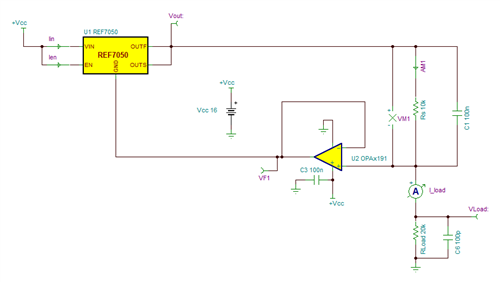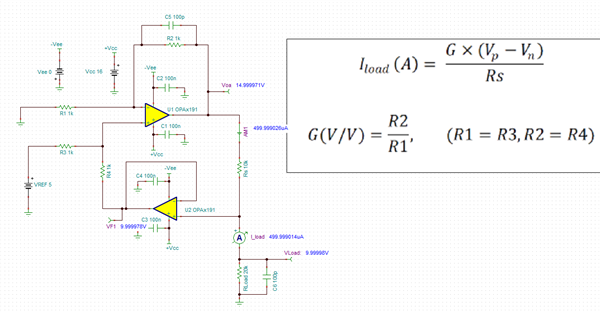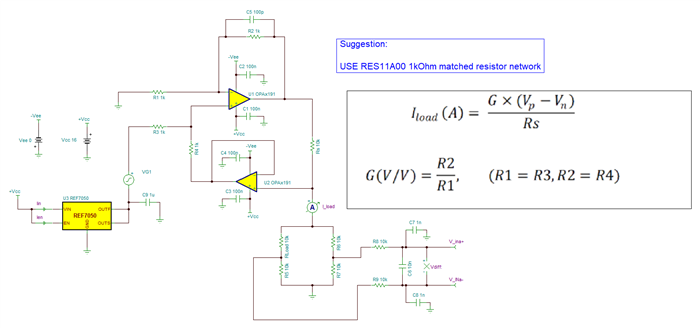Other Parts Discussed in Thread: LM118-N, OPA191, OPA2191
Tool/software:
Hi,
I am supporting my customer with the design of a constant current source which outputs 500uA to a 20k ohm load. It receives a 16V power supply to the op amp, a 5V reference voltage to the non-inverting input, and a maximum of 12V at the output.
Are you able to recommend a device here?
I have looked at the LM118-N, however, the high slew rate or frequency is not required, with a greater focus on the integrity of the output current. I have also looked at the OPA928. This meets the specifications, however it doesn’t mention current sources or supplies in the use application. Also, if possible, over voltage protection for the power supply would be a nice feature.
BR, Ross




